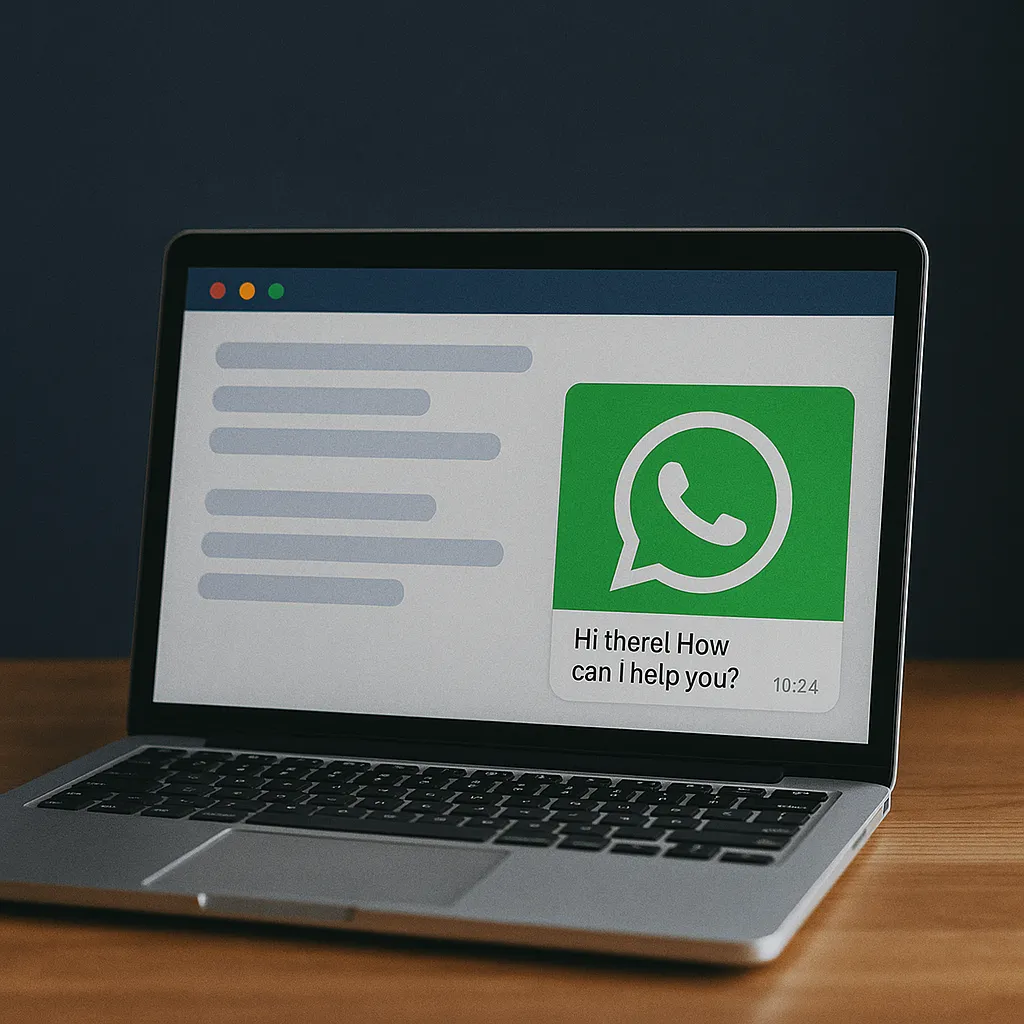Let’s face it—nobody likes filling out contact forms or waiting hours for a reply. When people visit your site, they expect answers fast. Enter live WhatsApp chat: a quick, friendly, and mobile-first way to connect. It’s simple, it’s familiar, and with tools like StackWhats, it’s free to integrate.
In this article, we’ll look at how adding WhatsApp chat for website pages is changing the game for customer communication. We’ll walk through how it works, what features matter most, and how businesses are using it to drive real results—whether you’re running a shop, service, or startup.
What Is WhatsApp Chat for Website Pages?
Think of it like this: a visitor clicks on your website and sees a chat bubble in the corner. One tap opens WhatsApp. No login, no extra app, no friction. That’s WhatsApp chat for website use in action.
It’s essentially a bridge between your site and your WhatsApp inbox. Visitors get instant access to a real person (you or your team), and you get to talk to them on a platform they already trust. It’s fast, familiar, and totally mobile-ready.
With over 2 billion monthly users, WhatsApp isn’t just a messaging app—it’s a communication powerhouse. When you install a live WhatsApp chat widget, you’re inviting users to start a conversation in seconds.
Why Live WhatsApp Chat Works So Well
Still using generic contact forms? You might be losing leads without realizing it. A WhatsApp chat for website integration offers a more natural, human way to communicate—especially for mobile-first users.
Here’s why it works:
- Instant response: Chat messages feel more urgent than email.
- Higher open rates: WhatsApp messages get seen. Period.
- Direct connection: No middleman, no call center queue.
- Built-in trust: WhatsApp is already part of daily life.
Customers are far more likely to ask questions when they don’t feel like they’re committing to a full conversation. With WhatsApp, it’s as casual as texting a friend.
Features That Matter in a WhatsApp Integration
Don’t just settle for any tool. If you’re embedding a live WhatsApp chat widget, make sure it ticks these boxes:
1. Customizable Appearance
Your chat button should fit your site’s style. Change colors, icon shapes, or greeting messages to match your tone and layout.
2. Page-Specific Triggers
Maybe you want chat enabled only on your pricing page or checkout step. Choose a widget that gives you control.
3. Time-Sensitive Settings
Some widgets allow you to show or hide the chat based on time—say, during working hours only. Handy if you don’t offer 24/7 replies.
4. Team Routing
If more than one person handles messages, route chats by category or department (like Sales, Support, or Billing).
5. Mobile Optimization
Always check how your widget looks on smartphones. Most users will reach out from their phones, not desktops.
How to Install WhatsApp Chat for Website Pages in Minutes
Adding WhatsApp chat for website functionality might sound technical, but it’s actually super simple. Services like StackWhats make it beginner-friendly.
Here’s a quick step-by-step:
- Go to StackWhats
- Enter your WhatsApp number and customize your widget
- Copy the generated HTML or JavaScript code
- Paste it into your website (usually in the footer or header)
- Save changes and refresh
That’s it. In under five minutes, you’ll see a clickable WhatsApp icon ready for action.
Real Use Cases: What Businesses Are Doing with It
Live WhatsApp chat isn’t just for tech-savvy startups. It’s becoming a standard across industries. Let’s look at a few real-world examples:
| Business Type | How They Use WhatsApp Chat | Results Noted |
|---|---|---|
| Online Retail | Customer support during checkout | +22% conversion uplift |
| Local Restaurant | Take orders and answer availability | Faster service, more orders |
| Travel Agency | Share quotes and booking details | Improved engagement |
| Freelancer/Coach | Answer pre-sale questions instantly | Shorter sales cycles |
It’s about being accessible. The sooner someone can reach you, the more likely they’ll buy.
Best Practices for Live WhatsApp Chat Integration
To get the most out of your WhatsApp chat for website, here are a few practical tips:
- Set clear expectations: Add auto-responses that explain when you’ll reply.
- Keep tone consistent: WhatsApp is informal—but still keep it professional.
- Use quick replies: Set saved answers for common questions.
- Track engagement: If your widget supports tracking, analyze when and where users click.
- Don’t overuse: Avoid cluttering every page. Focus on key conversion points.
Think of the chat as an assistant—not a replacement. Let it handle introductions while you manage the actual conversations.
Security and Privacy Considerations
Some business owners worry about privacy or spam. Here’s the good news: WhatsApp is end-to-end encrypted. That means your conversations stay secure.
Still, follow some smart practices:
- Don’t share sensitive data over chat (like passwords or financial info)
- Use WhatsApp Business for features like away messages, labels, and business profiles
- Link to your privacy policy in the chat widget or first message
People trust WhatsApp because it’s private. Don’t break that trust—use the platform respectfully and transparently.

